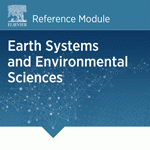Subsidies to Energy Industries (2015 update)

Energy resources vary widely in terms of their capital intensity, reliance on centralized networks, environmental impacts, and energy security profiles. Although the policies of greatest import to a particular energy option may differ, their aggregate impact is significant. Subsidies to conventional fuels can slow research into emerging technologies, thereby delaying their commercialization. Subsidies and exemptions to polluting fuels reduce the incentive to develop and deploy cleaner alternatives. Inadequate tracking and recovery of costs associated with protecting energy security reduce the drive for more diversification.
Though estimates remain imperfect, the scale of global subsidies is staggering: more than $800 billion annually in fiscal subsidies alone. Including midpoint estimates for environmental externalities, primarily associated with fossil fuels, brings the annual total above $2 trillion, or roughly 3% of global GDP.
Justifications for energy subsidies include social welfare, protection and promotion of jobs or industries, rural development, and energy security. Existing policies frequently fail to achieve these aims in practice. Because individual subsidies can be worth millions of dollars and often require sophistication or connections to obtain, policies implemented to help poorer segments of society may end up enhancing the wealth of more powerful groups instead. Often, the objectives of subsidy programs can be achieved in a manner that is more narrowly targeted and efficient than the subsidy policies now in place. For example, decoupling subsidy payments to the poor from resource-depleting activities can greatly reduce the environmental damages associated with the transfers.
This paper examines the general issue of subsidy definition and measurement and then presents central issues associated with subsidization at each stage of a generic fuel cycle. Aggregate patterns of subsidization and the challenges of subsidy reform are addressed in the subsequent two sections. An earlier version of this paper, published in 2004, can be accessed here.
The paper is reposted with permission of Elsevier; reprints are available here.

